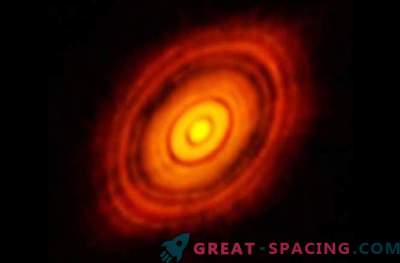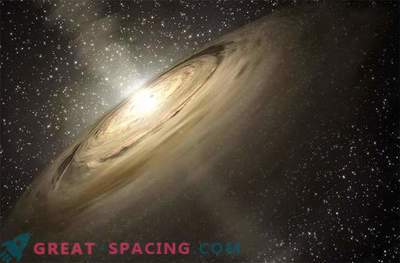
Dust ring model around the young star Elias 24, created on the basis of modeling new ALMA millimeter frames. The model shows that dust was created by a planet with 70% of Jupiter’s mass and 60 a distance from the star. e
Most often, exoplanets are found by the transit method, noting the star flicker, or by measuring the radial velocity (oscillations). It is extremely rare to see the world in direct visualization, because it is difficult to see a dim object in bright starlight. But the emergence of a new generation of radio interferometers made it possible to display protoplanetary disks, and in them to find orbital exoplanets. Particularly interesting are the gaps and ring-shaped structures.
Dust rings have been found in many protoplanetary systems in infrared and submillimeter radiation. The origin of the rings is still under discussion. It may have emerged from dust clusters, dust deposition, gravitational instability, or even fluctuations in the optical properties of dust. There is an alternative. Rings can appear from the dynamic process of the orbital motion of planets that are already developed and moving along established routes. Then the planets should cause waves on dusty discs, which when scattered form gaps. The problem can be solved if it is recognized that dust grains of different sizes differ in their behavior: small ones are associated with gas, while large ones follow a pressure gradient and concentrate near gaps.
The researchers decided to use the object ALMA - the star Elias 24. They managed to find evidence of the presence of gaps and rings, suggesting that they are being formed by an orbiting planet. This also explains the model, showing that the planet reaches 70% of Jupiter by mass and is 61.7 a distance from its star. e.











































